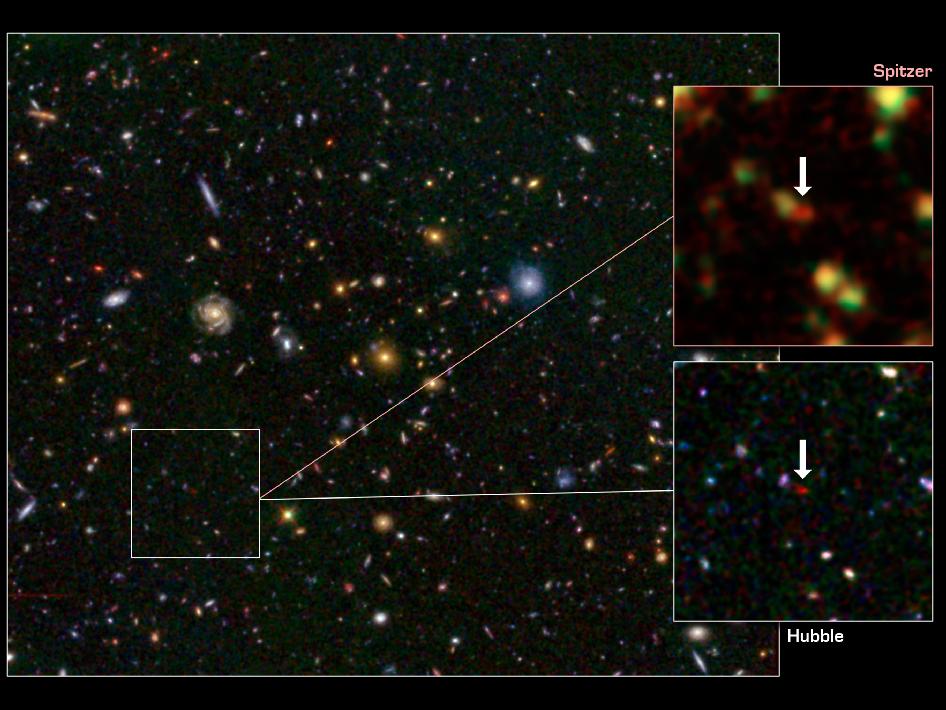NASA telescopes help find rare galaxy at dawn of time
December 23, 2011

This image shows one of the most distant galaxies known, called GN-108036, dating back to 750 million years after the Big Bang that created our universe. The galaxy's light took 12.9 billion years to reach us. (Credit: NASA/JPL-Caltech/STScI/University of Tokyo)
Astronomers using NASA’s Spitzer and Hubble space telescopes have discovered that one of the most distant galaxies known is churning out stars at a shockingly high rate. The blob-shaped galaxy, called GN-108036, is the brightest galaxy found to date at such great distances.
The galaxy, which was discovered and confirmed using ground-based telescopes, is 12.9 billion light-years away. Data from Spitzer and Hubble were used to measure the galaxy’s high star production rate, equivalent to about 100 suns per year. For reference, our Milky Way galaxy is about five times larger and 100 times more massive than GN-108036, but makes roughly 30 times fewer stars per year.
GN-108036 lies near the very beginning of time itself, a mere 750 million years after our universe was created 13.7 billion years ago in an explosive “Big Bang.” Its light has taken 12.9 billion years to reach us, so we are seeing it as it existed in the very distant past.
“The high rate of star formation found for GN-108036 implies that it was rapidly building up its mass some 750 million years after the Big Bang, when the universe was only about five percent of its present age,” said Bahram Mobasher, a team member from the University of California, Riverside. “This was therefore a likely ancestor of massive and evolved galaxies seen today.”
Ref.: Yoshiaki Ono et al.,SPECTROSCOPIC CONFIRMATION OF THREE z-DROPOUT GALAXIES AT z = 6.844-7.213: DEMOGRAPHICS OF Lyα EMISSION IN z ~ 7 GALAXIES, Astrophysical Journal, 2011 [doi: 10.1088/0004-637X/744/2/83]